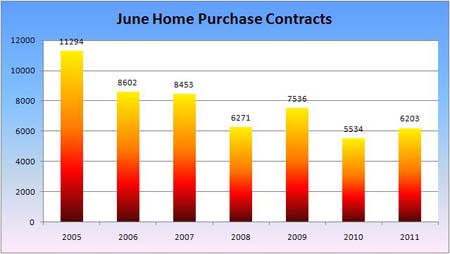From the Record:
Home prices flat in North Jersey, National Association of Realtors says
North Jersey home prices were flat in the second quarter, compared with a year earlier, the National Association of Realtors reported Wednesday. But a number of local real estate agents say they believe prices are declining.
According to the NAR, single-family homes in the New York metropolitan area, which includes North Jersey, sold for a median $448,700 in the second quarter of 2011, up 1.2 percent from a year earlier. At the same time, however, the number of house and condo sales in New Jersey fell 23.9 percent from the second quarter of 2010, when the market was pumped up by an $8,000 federal tax credit for first-time home buyers.
Nationally, home sales were down 12.7 percent and prices dropped 2.8 percent from the second quarter of 2010 to the second quarter of 2011.
“Prices are under pressure, since the buyers are all searching for a bargain,” said Carolee Chirico of ERA Douglass Realtors in Montvale. “I believe they’re afraid to overpay in a market that may continue to decline.”
“We have seen the prices in Passaic County fall fast and far,” said John Susani of Coldwell Banker Susani Realty in Paterson. “Some areas, like Paterson, are being hit harder because of higher taxes and higher unemployment in urban areas. Interest rates are lower, and still no buyers. We still have foreclosures and short sales, which need to sell before we are back to normal.”
Johnny Rojas of Century 21 JR Gold Team Realty in Garfield said well over half of the sales North Jersey’s urban neighborhoods are distressed sales, such as bank-owned properties. Those sales tend to sell at a discount of 20 percent or more to market values.
More affluent towns have fared better, said Michael Machinski, a Weichert agent in Ridgewood. He said that Ridgewood, where many residents take the commuter train to jobs in financial services, has seen “slight increases in prices.”
“The blue-collar towns, in particular those with no direct train line to New York, are still seeing price declines,” Machinski said.
…
Antoinette Gangi, a Re/Max agent in Woodcliff Lake, said a home in Hillsdale that recently went on the market at $699,000 drew about eight offers in a day and went under contract for more than the asking price. The home, she said, would have been priced at $850,000 at the peak of the housing boom.“Sellers have finally accepted that you must price homes to sell,” Gangi said.

